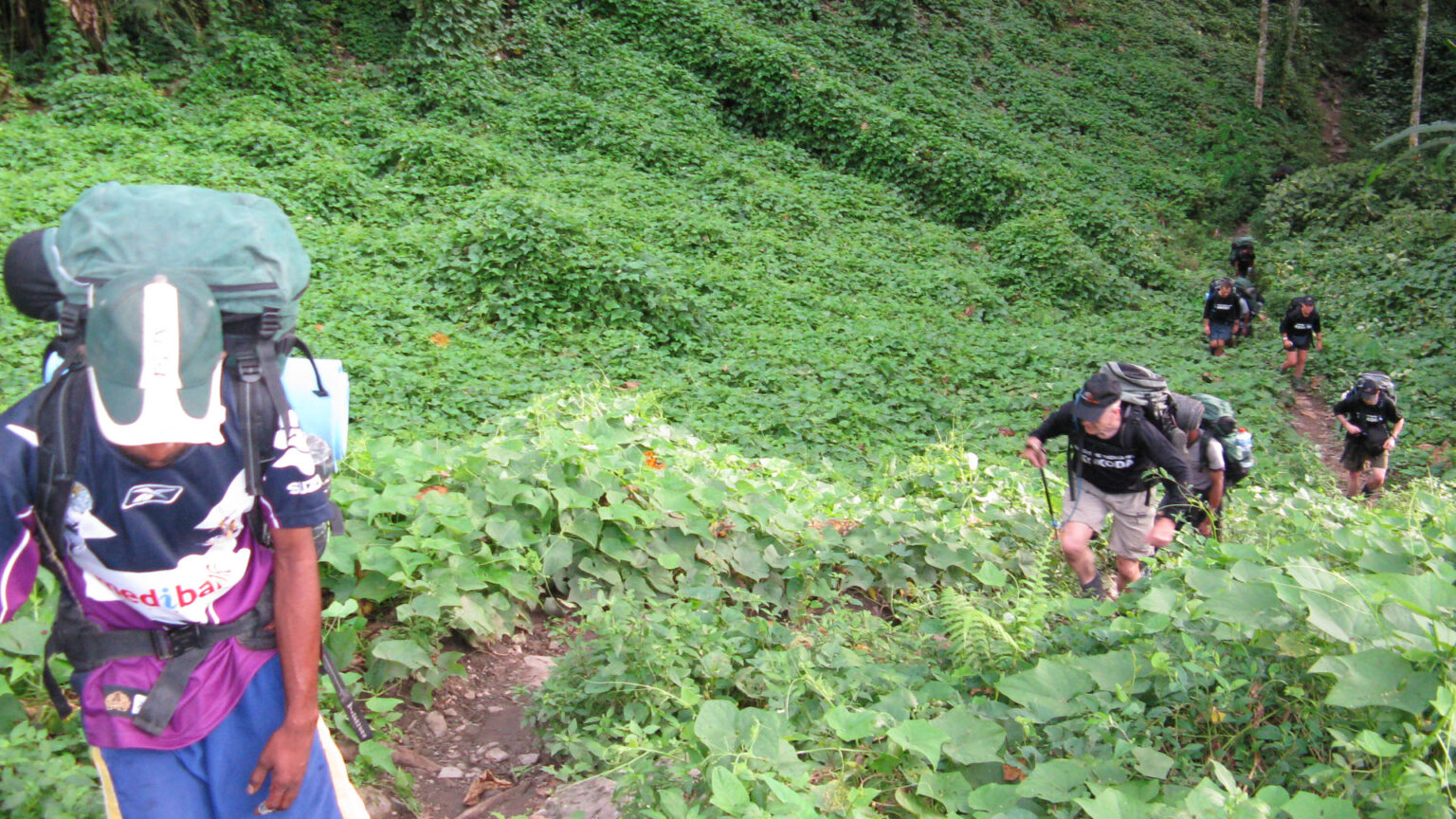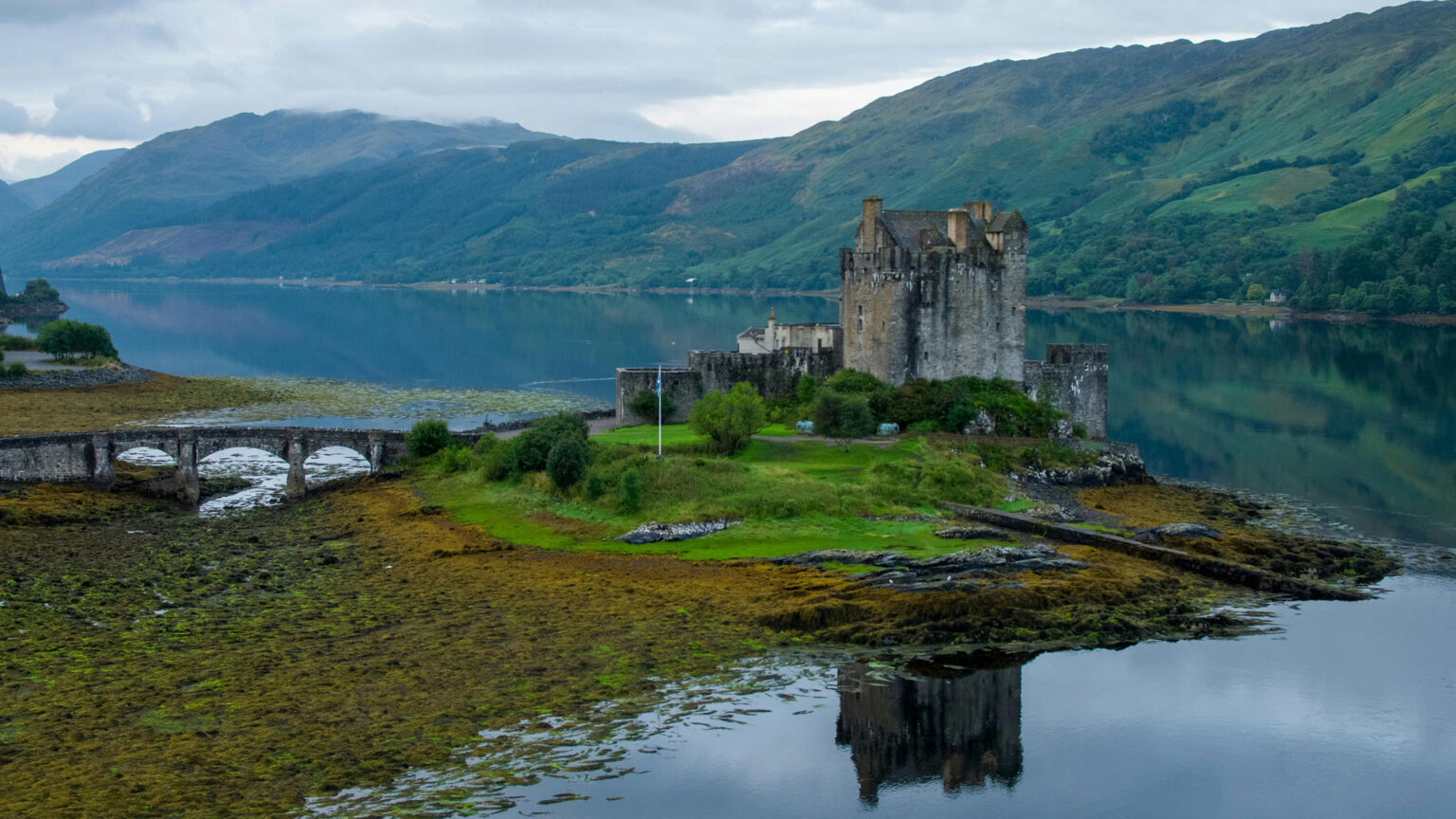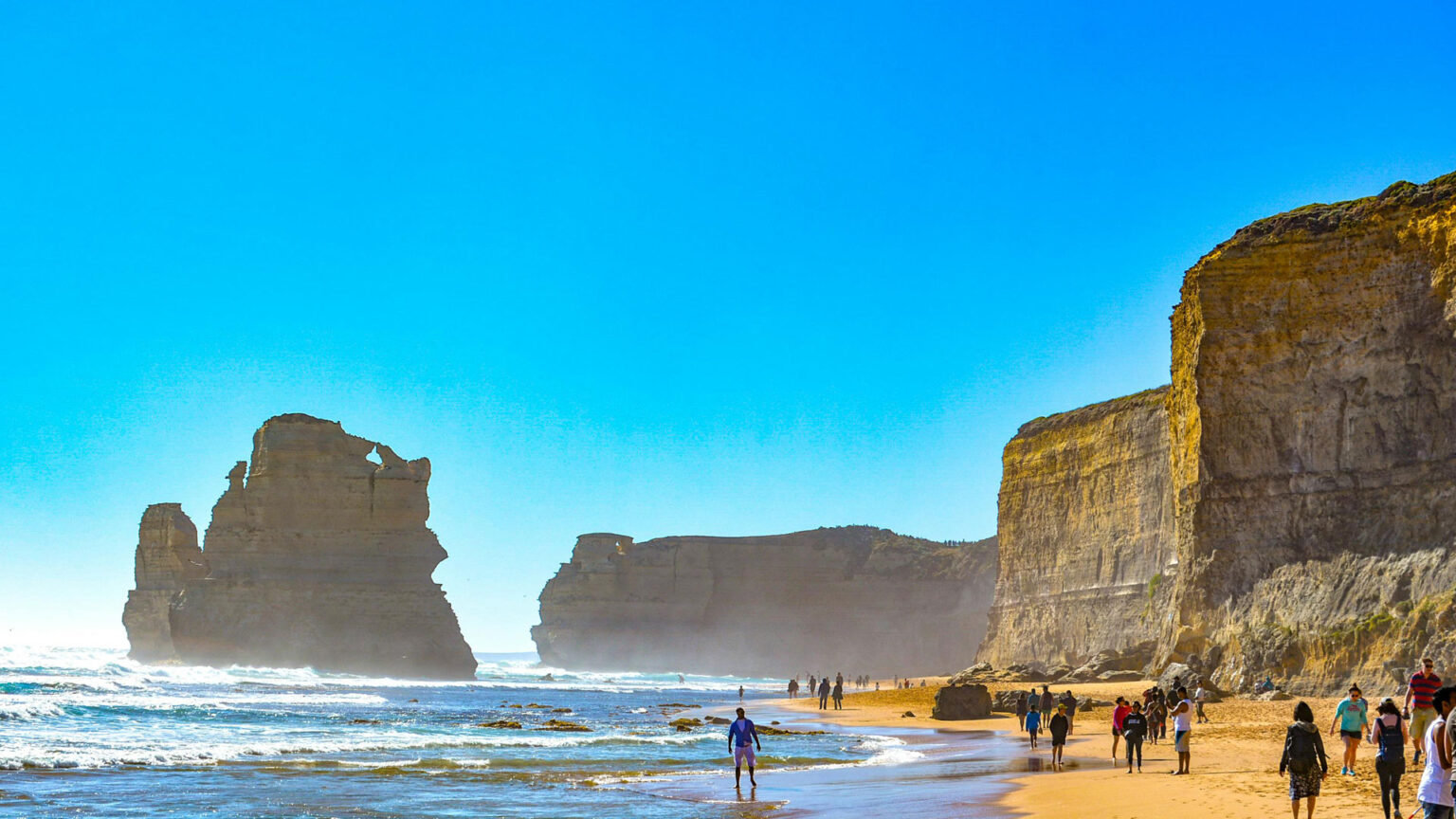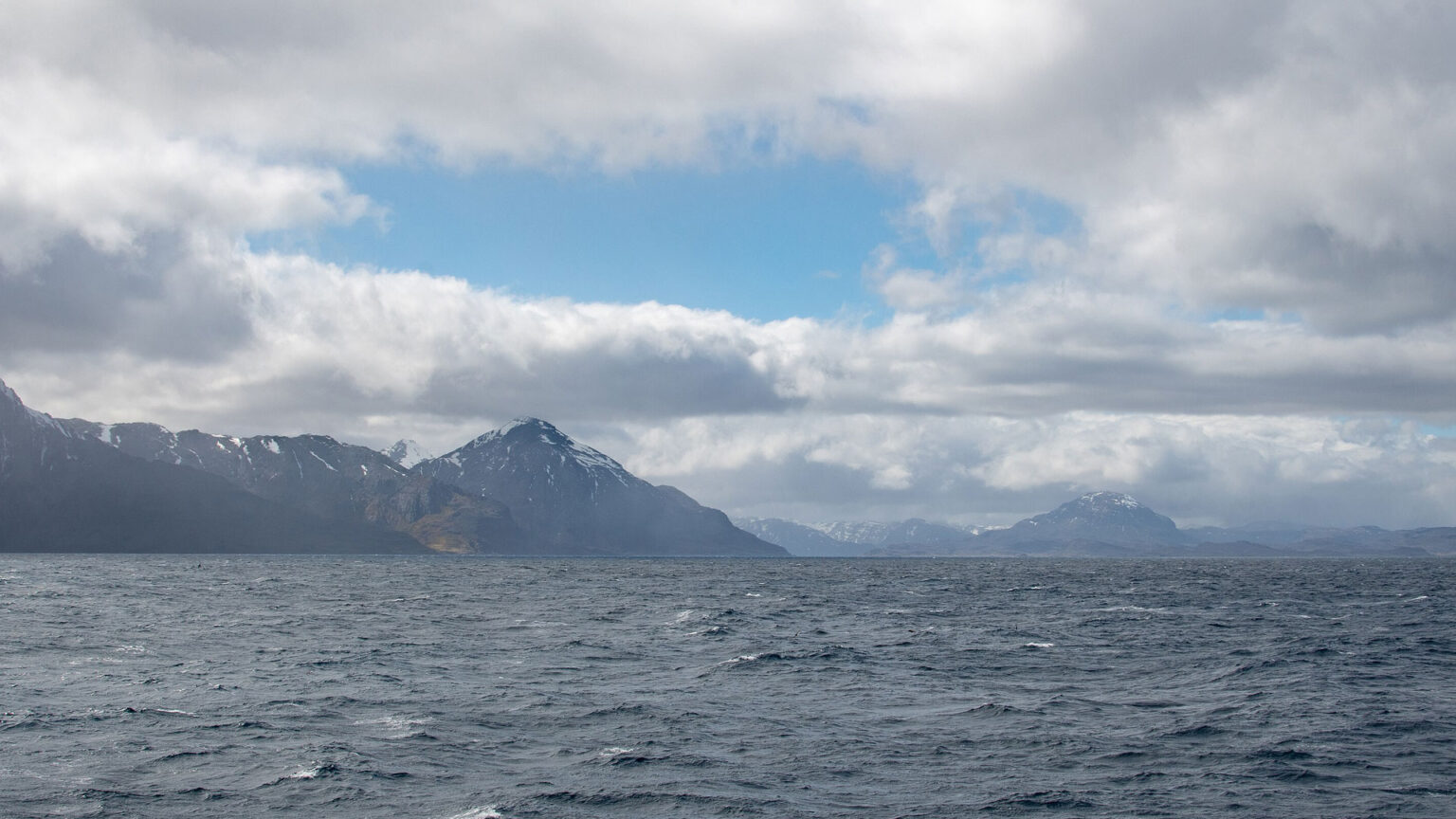Hiking the Kokoda Track: Jungle Warfare and Treacherous Terrain

Hiking the Kokoda Track, a notorious 96-kilometer trek in Papua New Guinea, is an adventure that tests physical endurance, mental toughness, and historical curiosity. The Kokoda Track, steeped in World War II history, beckons thrill-seekers and history enthusiasts alike. This iconic trail has become a pilgrimage for those seeking to honor the bravery and sacrifice of the soldiers who fought and died on this very ground.
A Brief Overview of the Kokoda Track
Located in the Owen Stanley Range, the Kokoda Track stretches from Owers Corner to Kokoda Village, traversing rugged terrain, dense jungle, and scenic villages. This grueling trail takes approximately 6-9 days to complete, challenging even the most seasoned hikers. The track’s diverse landscapes, from tropical rainforests to mountainous ridges, provide breathtaking views and unforgettable experiences.
Importance of the Kokoda Track in WWII History
During World War II, the Kokoda Track played a pivotal role in the Pacific Theater. In 1942, Australian and Papuan forces clashed with Japanese troops in a series of intense battles. The Kokoda Track campaign, fought from July to November 1942, marked a crucial turning point in the war. Allied forces, despite facing treacherous terrain and harsh conditions, successfully defended Port Moresby and halted Japanese advancement.
The battles fought along the Kokoda Track were brutal and decisive. The Japanese army, seeking to capture Port Moresby, was met with fierce resistance from Australian and Papuan forces. The campaign saw significant losses on both sides, with over 600 Australian soldiers killed and thousands more wounded. The bravery and sacrifice of these soldiers are still remembered today, with many considering the Kokoda Track campaign a defining moment in Australian history.
Challenge and Allure of Hiking the Kokoda Track
Hiking the Kokoda Track offers an unparalleled adventure experience. Trekkers confront:
- Rugged terrain: steep inclines, muddy paths, and river crossings.
- Unpredictable weather: torrential rains, sweltering heat, and humid conditions.
- Historical significance: remnants of WWII battles, memorials, and ancestral lands.
The allure of the Kokoda Track lies in its:
- Immersive history: walking in the footsteps of WWII soldiers.
- Cultural encounters: interacting with local villages and communities.
- Personal challenge: pushing physical limits in a demanding environment.
As hikers embark on this journey, they will discover:
- The resilience of the human spirit, as embodied by the soldiers who fought and died on the track.
- The significance of historical events, which shaped the course of the war and the world.
- The beauty of Papua New Guinea’s untamed wilderness, with its lush rainforests, majestic mountains, and vibrant culture.
For those willing to take on the challenge, the Kokoda Track promises an unforgettable experience. With its rich history, stunning landscapes, and personal challenges, this trek is an adventure like no other.
History of the Kokoda Track
The Kokoda Track, a 96-kilometer trail in Papua New Guinea, witnessed intense fighting between Allied and Japanese forces in 1942. This strategic location controlled access to Port Moresby, a crucial Allied base and vital supply hub. The track’s remote location and challenging terrain made it an ideal battleground for guerrilla warfare.

WWII Battles and Significance
In July 1942, Japanese forces landed at Gona, on Papua’s northern coast, aiming to capture Port Moresby and secure a strategic foothold. Australian and Papuan forces responded, engaging the enemy in a series of brutal battles:
- Battle of Kokoda (July 29 – August 13, 1942): The first major battle, where Australian forces initially retreated, but later regrouped and counterattacked.
- Battle of Deniki (August 13 – 14, 1942): A fierce battle, where Australian forces retook Deniki, a strategic location overlooking Kokoda.
- Battle of Isurava (August 26 – 29, 1942): A pivotal battle, where Australian forces, despite being outnumbered, held their ground against Japanese attacks.
- Battle of Brigade Hill (September 6 – 8, 1942): A brutal battle, where Australian forces repelled Japanese attacks, securing a vital victory.
These battles, fought in treacherous terrain and harsh conditions, tested the resolve and endurance of both sides. The Allies’ ultimate victory marked a significant turning point in the Pacific War.
Australian and Papuan Forces’ Role
Australian and Papuan forces played a crucial role in defending Port Moresby:
- Australian 39th Battalion: The first Australian unit to engage Japanese forces, demonstrating remarkable bravery and sacrifice.
- Papuan Infantry Battalion: Local forces who knew the terrain and fought bravely, providing invaluable support to Australian troops.
- Australian 2nd/14th Battalion: Arrived in August 1942, bolstering Allied defenses and contributing to the ultimate victory.
Their bravery and sacrifice halted Japanese advancement, securing a vital Allied victory. The bonds forged between Australian and Papuan forces remain strong to this day.
Japanese Occupation and Withdrawal
After intense fighting, Japanese forces withdrew from the Kokoda Track in November 1942:
- Japanese retreat: Forces fell back to the northern coast, abandoning their Port Moresby objective.
- Allied pursuit: Australian and Papuan forces pursued the enemy, securing key locations and solidifying their grip on the region.
The Kokoda Track campaign marked a significant turning point in the Pacific War, demonstrating the determination and resilience of Allied forces.
Hiking the Kokoda Track today offers a unique opportunity to explore this history, walking in the footsteps of soldiers who fought and died on this sacred ground. The experience is a poignant reminder of the sacrifices made and the bravery displayed during one of the most pivotal moments in World War II.
Trekking the Kokoda Track
Distance, Duration, and Difficulty
Hiking the Kokoda Track requires careful planning, as the trail’s distance, duration, and difficulty can be daunting:
- Distance: 96 kilometers (60 miles), spanning from Owers Corner to Kokoda Village
- Duration: Typically 6-9 days, depending on trekker experience and physical condition
- Difficulty: Challenging, with steep inclines, river crossings, and uneven terrain
Trekkers must be prepared for:
- Long days (up to 10 hours) of hiking, with limited rest breaks
- Physically demanding terrain, including mountainous inclines and declines
- Variable weather conditions, ranging from sweltering heat to torrential rain
To overcome these challenges, trekkers should:
- Develop a comprehensive training plan, incorporating cardiovascular and strength exercises
- Invest in high-quality hiking gear, including sturdy boots and waterproof clothing
- Acclimatize to Papua New Guinea’s tropical climate before embarking on the trek
Terrain and Climate Challenges
The Kokoda Track traverses diverse landscapes, each posing unique challenges:
- Mountainous terrain: steep inclines and declines, requiring careful navigation
- River crossings: swollen rivers and fast-flowing streams, demanding attention to safety
- Dense jungle: humid conditions and limited visibility, necessitating adaptability
- Tropical climate: high temperatures and heavy rainfall, testing physical endurance
Trekkers must adapt to:
- Unpredictable weather patterns, including sudden rainstorms and heatwaves
- Muddy and slippery trails, requiring cautious footwork
- Limited access to medical facilities, emphasizing self-sufficiency and emergency preparedness
To mitigate these risks, trekkers should:
- Monitor weather forecasts and trail conditions before and during the trek
- Pack essential safety gear, including first aid kits and emergency communication devices
- Stay informed about local customs and regulations
Logistical Considerations
Before embarking on Hiking the Kokoda Track, consider the following logistical aspects:
- Permits: Required for all trekkers, obtainable through licensed tour operators
- Guides: Mandatory for safety and navigation, providing expert knowledge and support
- Equipment: Sturdy hiking boots, waterproof gear, and first aid kits, ensuring trekker safety
Additional logistical considerations:
- Accommodation: Camping or village stays, offering unique cultural experiences
- Food and water: Provided by tour operators or self-sufficient, requiring careful planning
- Emergency evacuation: Plans in place for medical emergencies, ensuring prompt response
Pre-Trek Preparations
To ensure a safe and successful trek:
- Physical conditioning: Regular exercise and training, building endurance and strength
- Mental preparation: Understanding challenges and risks, developing coping strategies
- Medical clearance: Consult a doctor before trekking, addressing health concerns
By understanding the challenges and logistical considerations, trekkers can prepare for an unforgettable adventure on Hiking the Kokoda Track.
Tips and Reminders
- Research reputable tour operators, ensuring expert guidance and support
- Pack essential gear and equipment, prioritizing safety and comfort
- Stay informed about weather and trail conditions, adapting to changing circumstances
Embark on Hiking the Kokoda Track with confidence and preparation.
Kokoda Track Hike: Unveiling the Tactics of Jungle Warfare

The Kokoda Track Hike is renowned for its challenging terrain and historical significance, particularly in the context of jungle warfare during World War II. This infamous trail witnessed intense battles between Allied and Japanese forces, showcasing unconventional tactics and strategies. The harsh environment and geographic constraints of the Owen Stanley Range forced both sides to adapt and innovate, resulting in a unique and fascinating case study of jungle warfare.
The Kokoda Track Hike terrain presented numerous challenges:
- Dense jungle and fog reduced visibility.
- Steep inclines and river crossings hindered mobility.
- Disease-ridden mosquitoes and other hazards threatened troop health.
Despite these obstacles, both sides persevered, employing creative tactics to outmaneuver their opponents.
Guerrilla Warfare and Ambushes
The Kokoda Track Hike terrain lent itself to guerrilla warfare, with both sides employing ambush tactics:
- Australian and Papuan forces utilized knowledge of the terrain to launch surprise attacks on Japanese patrols, exploiting familiarity with the jungle.
- Japanese forces employed similar tactics, exploiting the dense jungle for cover and concealment.
- Guerrilla warfare allowed smaller forces to effectively harass and disrupt larger enemy units.
Key characteristics of guerrilla warfare on the Kokoda Track:
- Mobility and flexibility: Forces could move quickly and quietly through the jungle, utilizing hidden trails.
- Utilization of local knowledge: Indigenous guides and scouts provided invaluable insights into terrain and enemy movements.
- Employment of ambushes and raids: Surprise attacks wore down enemy morale.
These tactics allowed the Allies to offset the Japanese advantage in numbers and firepower.
Examples of Guerrilla Warfare
- Australian forces conducted stealthy patrols, gathering intelligence on Japanese positions.
- Papuan scouts guided Allied troops through hidden jungle paths.
- Japanese soldiers employed snipers to harass Allied forces.
Japanese Tactics and Strategies
Japanese forces on the Kokoda Track Hike employed innovative tactics:
- Utilization of light infantry and rapid mobilization: Japanese troops moved swiftly through the jungle, exploiting gaps in Allied lines.
- Employment of snipers and camouflage: Concealed positions allowed Japanese soldiers to harass Allied forces.
- Implementation of “Banzai” charges: Sacrificing men for territorial gain, these attacks aimed to break Allied lines.
Japanese strategies aimed to:
- Secure key terrain features: Controlling high ground and river crossings.
- Disrupt Allied supply lines: Interdicting logistics and communication.
- Exploit the jungle environment: Using terrain to conceal and protect troops.
However, these tactics ultimately proved ineffective against determined Allied forces, who adapted and countered Japanese initiatives.
Allied Countermeasures and Victories
In response to Japanese tactics, Allied forces developed effective countermeasures:
- Implementation of patrolling and reconnaissance: Gathering intelligence on Japanese movements.
- Utilization of air support and artillery: Providing firepower to supplement ground troops.
- Development of jungle warfare training programs: Preparing soldiers for the unique challenges.
Key Allied victories on the Kokoda Track Hike:
- Battle of Kokoda (July 29 – August 13, 1942): Australian forces repelled Japanese advances.
- Battle of Isurava (August 26 – 29, 1942): Allied troops held ground against Japanese attacks.
- Battle of Brigade Hill (September 6 – 8, 1942): Australian forces secured a strategic ridge.
These victories marked a turning point in the campaign, as Allied forces adapted and overcame Japanese tactics.
Tactical Lessons from the Kokoda Track Hike
The jungle warfare tactics employed during the Kokoda Track Hike offer valuable lessons:
- Adaptation to terrain and environment: Forces must adjust to unique conditions.
- Utilization of local knowledge and mobility: Indigenous guides and rapid movement provide advantages.
- Effective employment of ambushes and raids: Surprise attacks can disrupt enemy operations.
Understanding these tactics provides insight into the challenges and triumphs of the Allied forces on the Kokoda Track Hike.
Strategic Implications
The Kokoda Track Hike campaign holds strategic implications:
- Jungle warfare requires specialized training and equipment.
- Adaptability and flexibility are crucial in unconventional warfare.
- Local knowledge and support are essential for success.
These lessons remain relevant today, informing military doctrine and strategy.
Kokoda Track Hike: Navigating Treacherous Terrain
The Kokoda Track Hike is notorious for its treacherous terrain, pushing even the most experienced adventurers to their limits. This unforgiving landscape played a significant role in the historic battles between Allied and Japanese forces during World War II.
Rugged Landscape and Mountainous Terrain
The Owen Stanley Range’s rugged landscape poses significant challenges:
- Steep inclines and declines: Treacherous trails and narrow ridges.
- Rocky terrain: Slippery surfaces and hidden crevices.
- Dense jungle: Limited visibility and disorienting surroundings.
Mountainous terrain features:
- High altitude: Thin air and reduced oxygen.
- Unpredictable weather: Sudden rainstorms and fog.
- Landslides and rockfalls: Ever-present hazards.
These obstacles demand careful navigation, physical endurance, and mental toughness.
River Crossings and Swampy Areas
River crossings and swampy areas are equally hazardous:
- Fast-flowing rivers: Strong currents and hidden obstacles.
- Swampy terrain: Treacherous footing and disease-ridden mosquitoes.
- Unstable bridges: Rickety structures and precarious crossings.
Key river crossings on the Kokoda Track:
- Goldie River: A major obstacle, requiring careful navigation.
- Ua-ule Creek: A notorious crossing, known for strong currents.
- Ofi Creek: A challenging crossing, demanding caution.
These waterways and wetlands pose significant risks, requiring vigilance and expertise.
Disease and Injury Risks
The Kokoda Track’s environment harbors numerous health hazards:
- Malaria and other diseases: Mosquito-borne illnesses.
- Injuries from accidents: Falls, sprains, and broken bones.
- Environmental hazards: Snake bites, spider bites, and heat exhaustion.
Precautions are essential:
- Vaccinations and medications: Preventing disease.
- Safety gear and equipment: Mitigating injury risks.
- First aid training: Responding to emergencies.
Understanding the treacherous terrain and potential risks is crucial for a safe and successful Kokoda Track Hike.
Tactical Considerations
Historically, the treacherous terrain influenced military tactics:
- Ambushes and raids: Utilizing terrain for concealment.
- Flanking maneuvers: Exploiting terrain features.
- Logistics and supply: Overcoming terrain challenges.
The Kokoda Track Hike serves as a testament to the bravery and resilience of soldiers who fought in these unforgiving conditions.
Preparation and Planning
To tackle the Kokoda Track Hike, adventurers must:
- Research and prepare thoroughly.
- Engage experienced guides and support teams.
- Acclimatize to the environment.
Physical conditioning, mental toughness, and careful planning are essential for overcoming the treacherous terrain.
Kokoda Track Hike: Ensuring Preparation and Safety

The Kokoda Track Hike demands rigorous preparation and attention to safety. This challenging trek requires physical endurance, specialized gear, and careful planning to mitigate risks.
Physical Conditioning and Training
Physical preparation is crucial:
- Cardiovascular endurance: Building stamina for long hikes.
- Strength training: Developing muscular resilience.
- Flexibility and mobility: Enhancing agility.
Training recommendations:
- Start training 3-6 months prior to the hike.
- Incorporate hill sprints, strength exercises, and endurance activities.
- Acclimatize to high altitude and humidity.
Consult a medical professional before commencing training.
Essential Gear and Equipment
Pack essential gear:
- Sturdy hiking boots and socks.
- Waterproof clothing and gear.
- First aid kit and emergency supplies.
Additional essentials:
- Navigation tools (map, compass, GPS).
- Communication devices (satellite phone, two-way radio).
- Shelter and sleeping gear.
Choose gear suitable for tropical and high-altitude conditions.
Health and Safety Precautions
Health and safety considerations:
- Vaccinations: Consult a medical professional.
- Malaria prophylaxis: Take prescribed medication.
- Personal hygiene: Maintain cleanliness.
Safety precautions:
- Travel with a guide or experienced group.
- Monitor weather forecasts.
- Stay informed about local conditions.
Emergency protocols:
- Establish emergency contact procedures.
- Carry a personal locator beacon (PLB).
- Know basic first aid.
Pre-Trek Briefings
Attend pre-trek briefings to:
- Review safety procedures.
- Understand local regulations.
- Meet guides and trek members.
Buddy System
Implement a buddy system:
- Monitor each other’s health and well-being.
- Stay together during hikes.
- Assist in emergencies.
Contingency Planning
Develop contingency plans:
- Emergency evacuation procedures.
- Alternative routes.
- Communication protocols.
Insurance and Evacuation
Consider trekking insurance:
- Covers emergency evacuation.
- Provides medical assistance.
Understand evacuation procedures:
- Helicopter evacuation.
- Emergency medical response.
Kokoda Track Hike: Embracing Cultural Significance
The Kokoda Track Hike traverses sacred lands, rich in cultural heritage and historical significance. This iconic trek offers a unique opportunity to connect with local villages, honor historical sites, and respect ancestral lands.
Local Villages and Communities
The Kokoda Track passes through numerous villages:
- Kagi Village: The first village encountered on the track.
- Alola Village: Known for its stunning views.
- Kokoda Village: The final village on the track.
Engage with local communities:
- Learn traditional customs and practices.
- Support local economies.
- Respect village protocols.
Historical Sites and Memorials
The Kokoda Track is dotted with historical sites:
- Kokoda Memorial: Honoring Australian and Papuan soldiers.
- Isurava Battlefield: A pivotal battle site.
- Brigade Hill: A strategic location.
Visit memorials and battlefields:
- Pay respects to fallen soldiers.
- Understand the historical context.
- Reflect on the sacrifices made.
Respect for Ancestral Lands
The Kokoda Track traverses ancestral lands:
- Orokaiva and Koiari tribes: Traditional owners.
- Sacred sites and rituals.
- Cultural heritage.
Demonstrate respect:
- Follow local guidelines and protocols.
- Avoid disrupting sacred sites.
- Show appreciation for cultural heritage.
Cultural Protocols
Understand cultural protocols:
- Remove shoes when entering villages or sacred sites.
- Dress modestly.
- Avoid photography of sensitive areas.
Responsible Trekking
Practice responsible trekking:
- Support local guides and operators.
- Minimize environmental impact.
- Respect local customs.
Community Engagement
Engage with local communities:
- Attend village ceremonies.
- Participate in cultural activities.
- Learn local languages.
Legacy of the Kokoda Track
The Kokoda Track’s cultural significance extends beyond the hike:
- Preserves history and cultural heritage.
- Fosters international understanding.
- Supports local economies.
Embracing Cultural Significance
The Kokoda Track Hike offers a profound cultural experience:
- Connect with local communities.
- Honor historical sites.
- Respect ancestral lands.
Approach this trek with sensitivity, respect, and an open heart.
Kokoda Track Hike: A Journey of Endurance and Discovery
The Kokoda Track Hike embodies the essence of adventure, challenging trekkers physically, emotionally, and spiritually. This iconic journey weaves together threads of history, culture, and natural beauty, creating an unforgettable experience.
Conclusion
Recap of the Kokoda Track’s Challenges and Rewards
The Kokoda Track Hike presents:
- Treacherous terrain and unpredictable weather.
- Physically demanding and mentally tough.
- Opportunities for personal growth and transformation.
Rewards include:
- Breathtaking scenery and diverse wildlife.
- Immersive cultural experiences and historical significance.
- Sense of accomplishment and camaraderie.
Importance of Preserving History and Culture
The Kokoda Track:
- Honors the sacrifices of soldiers and local communities.
- Preserves the history of World War II.
- Protects traditional cultures and ancestral lands.
By trekking the Kokoda Track, adventurers:
- Support local economies and conservation efforts.
- Promote cross-cultural understanding.
- Preserve historical sites and memorials.
Inspiration for Adventure Seekers
The Kokoda Track Hike inspires:
- Personal challenge and self-discovery.
- Exploration of remote and breathtaking environments.
- Connection with like-minded adventurers.
Embarking on this journey:
- Fosters resilience and determination.
- Broadens perspectives and understanding.
- Creates lifelong memories.
Final Thoughts
The Kokoda Track Hike is more than a trek – it’s a pilgrimage:
- Honoring history and culture.
- Embracing challenge and transformation.
- Connecting with nature and humanity.
For those who accept the challenge:
- Prepare thoroughly.
- Respect local customs and environments.
- Embrace the journey.
Embark on the Kokoda Track Hike with an open heart and mind, ready to confront challenges, discover hidden strengths, and forge unforgettable memories.















